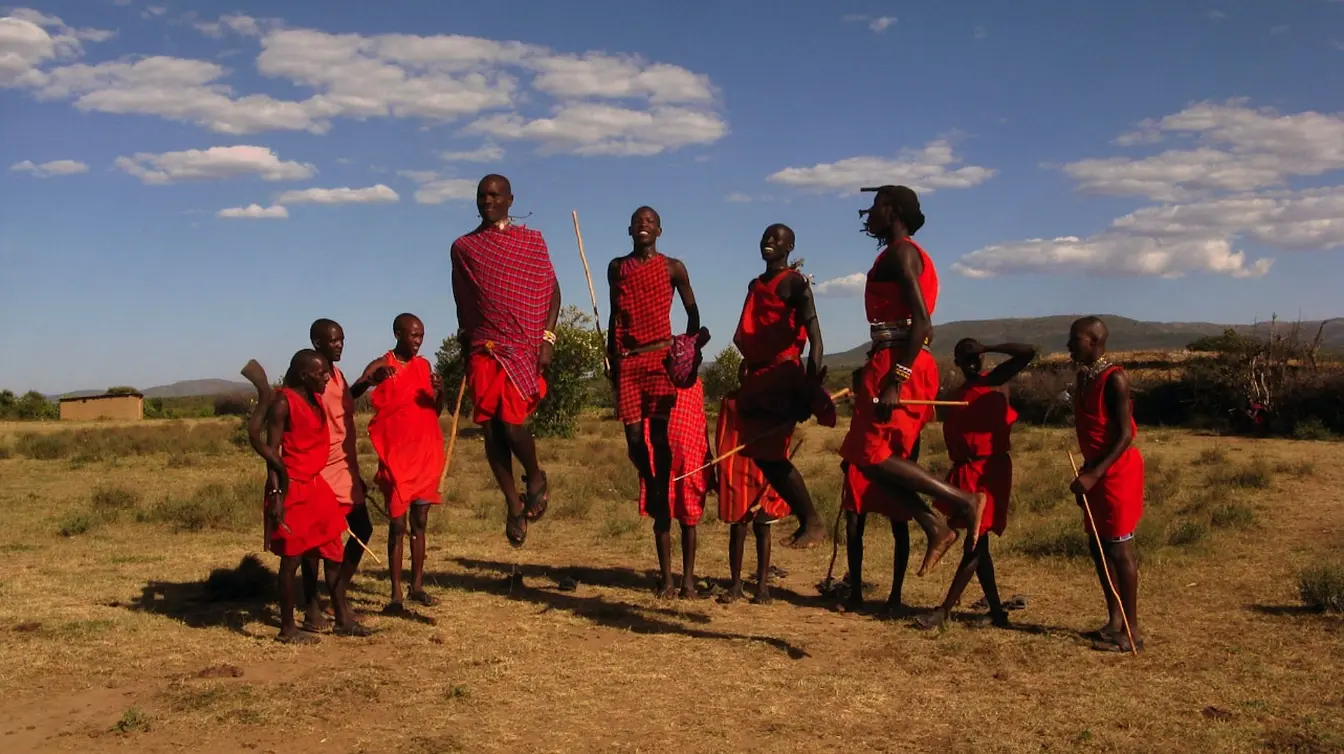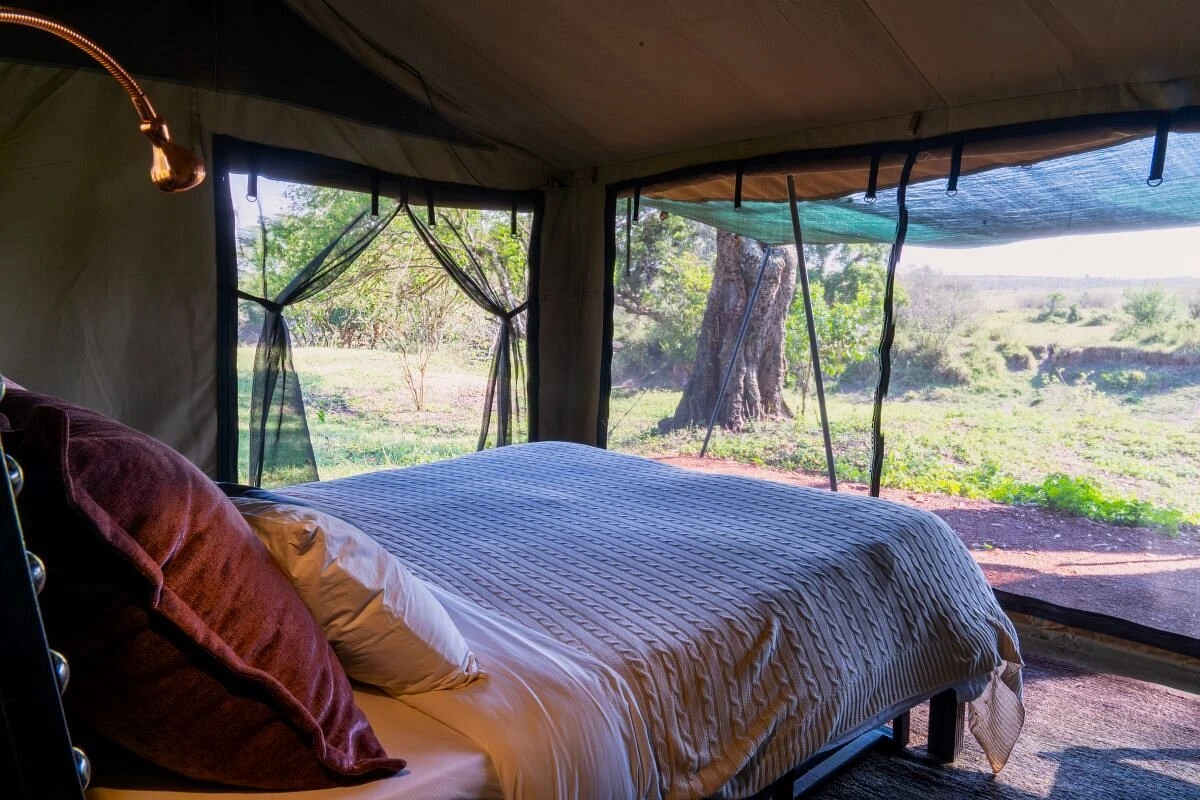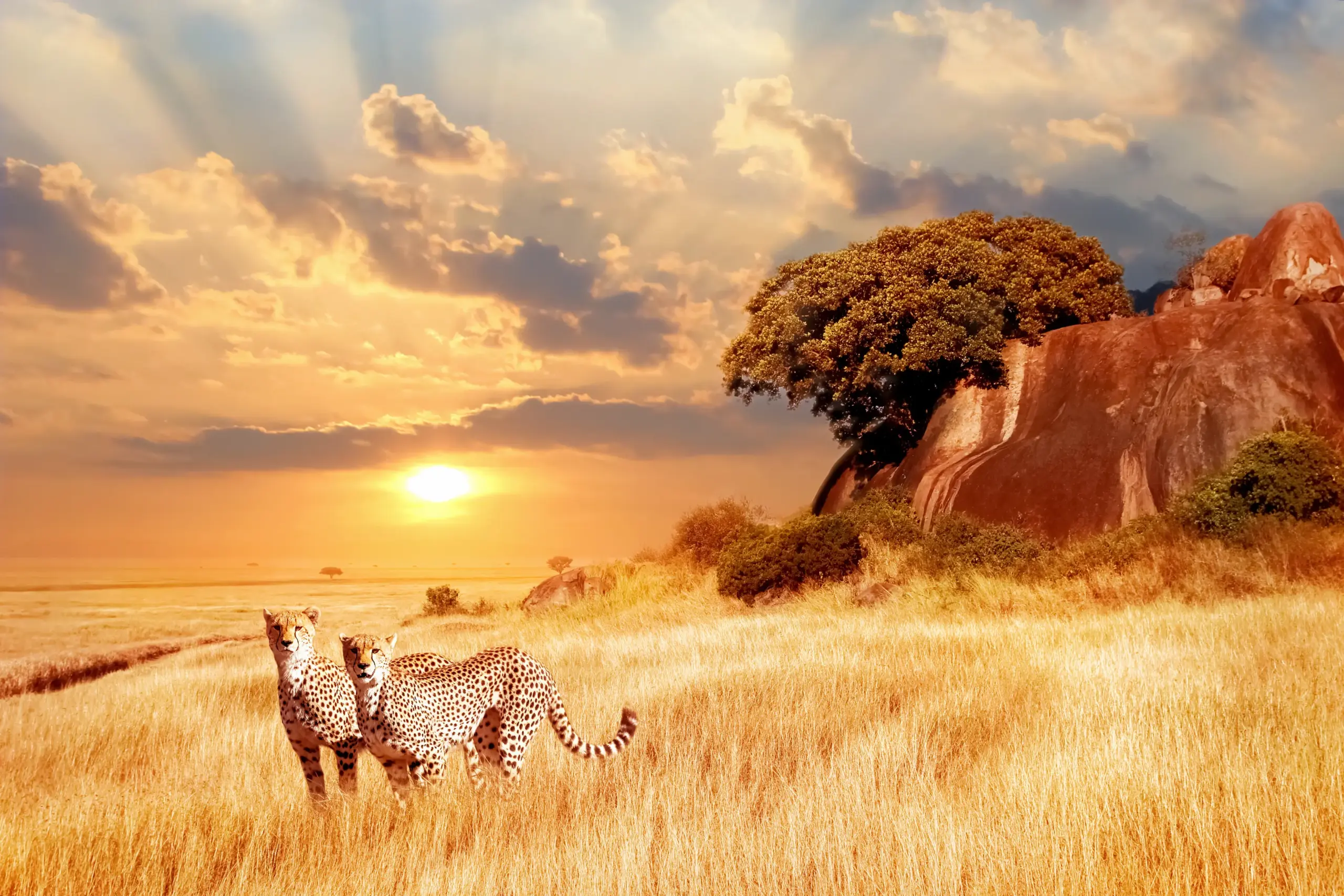Maasai Mara Safari: Going on safari in the Masai Mara
After countless hours of research and careful consideration, you’ve finally made the thrilling decision to experience a Masai Mara safari in Southwest Kenya. But before you set off on this unforgettable journey, one crucial question remains- what should you pack? Proper preparation is key to a smooth and enjoyable adventure. To help you gear up, here’s a practical guide with must-know tips for a safe and hassle-free safari.
African Safari: typical day in the Masai Mara National Park
In the Masai Mara, life moves in sync with the untamed wilderness. As dawn breaks over the endless plains, the wildlife stirs, and so does your adventure. Safari lodges take their cue from nature, offering early morning game drives before the sun fully rises—prime time for witnessing the Mara’s iconic predators and grazers in action. Whether you prefer to indulge in breakfast before heading out, enjoy it as a picnic mid-drive, or savor it upon return, the choice is yours.
After an exhilarating few hours tracking wildlife, the midday lull invites you to unwind—perhaps with a book, a siesta, or quiet moments soaking in the landscape from your lodge. As the golden hour approaches, another game drive awaits, setting the stage for unforgettable sightings bathed in sunset hues. Your lodge may elevate the moment with a well-paired wine, a perfect complement to the magic of an African sundowner. When night falls, a starlit dinner by the fire caps off a day steeped in the raw beauty of the Masai Mara.
Masai Mara safari activities
This glimpse barely scratches the surface of the unforgettable experiences that await on a Masai Mara safari. Across the diverse safari lodges and tented camps in the Masai Mara National Reserve, each offers its own curated selection of activities. While exhilarating game drives take center stage, you can also set out on a guided nature walk, drift over the stunning Mara River on a hot air balloon safari, savor a bush picnic, explore a traditional Maasai manyatta (village), or opt for other exciting excursions. Keep in mind that some activities, like hot air balloon safaris, may come at an extra cost. From East Africa’s abundant wildlife to the rich Maasai heritage and the awe-inspiring wildebeest migration, every moment in the Masai Mara is filled with adventure.
Getting to the Masai Mara
When mapping out your trip to the Masai Mara Game Reserve, you have two main ways to get there. If efficiency and ease are your priorities—or if you’re short on time—taking a flight is your best bet. Several daily flights operate to different airstrips in and around the Masai Mara National Reserve, ensuring a quick and hassle-free arrival. Your landing airstrip will depend on where you’re staying, allowing for a smooth transfer. A flight from Nairobi to the Masai Mara lasts about 40 to 45 minutes, making it the fastest way to kickstart your safari.
On the other hand, driving from Nairobi to the Masai Mara brings a sense of adventure and flexibility. It’s an excellent choice for those who enjoy scenic road trips or want a more budget-friendly option. However, the roads are notoriously rugged and unpredictable, stretching the journey to roughly six to seven hours. If you relish the thrill of off-the-beaten-path travel, this route will excite you. That said, most visitors opt for the convenience of flying over the long drive.
Learn all about getting to the Masai Mara.
Flying to the Masai Mara
Flying to the Masai Mara is a seamless way to reach your safari destination, with AirKenya and Safarilink offering regular flights to multiple local airstrips. The specific airstrip for your arrival is usually chosen based on the location of your safari lodge or tented camp, ensuring an easy transfer. Upon landing, a lodge-appointed guide or tracker will be on hand to take you to your accommodation. Departures from Nairobi’s Wilson Airport (WIL) occur at least once a day, providing flexible travel options. Guests at Governor’s Camp can take advantage of Governor’s Aviation, the camp’s dedicated airline, which operates direct flights from Wilson Airport to Musiara airstrip—just two kilometers away, making for a quick ten-minute drive to the camp.
Masai Mara by road
For the adventurous traveler, driving from Nairobi to the Masai Mara is an exhilarating experience. The journey begins on well-maintained tarmac roads but soon transitions into rugged, unpaved terrain. Once past Narok, the route to the Masai Mara National Reserve and its neighboring conservancies turns into a mix of gravel, dirt, and sometimes thick mud. Proper preparation is essential for those taking this path—knowing your destination’s exact location and having clear directions is key. Refueling in Narok or, if following a different route, in Talek Village is advisable, as petrol stations are scarce in these remote regions. Carrying an extra jerrycan of fuel can be a lifesaver.
Safari drives in Masai Mara National Reserve & conservancies
As you set foot in the Masai Mara, you’ll find yourself immersed in a world teeming with wildlife. If your stay is within a conservancy, your lodge will curate diverse safari adventures, potentially including a full-day excursion into the famous Masai Mara National Reserve. However, those accommodated inside the reserve won’t have access to conservancy safaris, as these are exclusive to guests residing within them. Whether you’re exploring the Mara Triangle or another conservancy, the encounters promise to be nothing short of extraordinary.
Bush meals, sundowners and campfire dinners
Food is a celebration of life, and your Masai Mara safari offers a dining experience that elevates every moment of your journey. The lodges and camps we feature serve an enticing selection of meals, expertly prepared using fresh, local, and seasonal ingredients. Whether you prefer the serenity of a morning coffee as the sun rises over the savannah or the camaraderie of a lavish breakfast buffet, there’s something to satisfy every palate.
During your game drives, many accommodations provide thoughtfully packed lunches, ensuring you stay energized for your adventures. As the sun dips toward the horizon, it’s time for a sundowner—a cherished Masai Mara tradition akin to happy hour. Sip on your favorite drink, indulge in delectable bites, and watch as the sky transforms into a masterpiece of fiery hues. When night falls, an enchanting fireside dinner awaits. Under the soft glow of lantern-lit trees and a blanket of stars, these meals—paired with impeccable service and breathtaking scenery—become treasured moments you’ll remember long after your safari ends.
Special meal arrangements
At safari lodges in the Masai Mara, the dedicated staff go above and beyond to make your stay exceptional. Should you have any dietary restrictions, just notify the lodge ahead of time. The chefs will gladly tailor your meals to suit your needs, ensuring a delightful dining experience.
Packing essentials for your Masai Mara safari
When getting ready for your adventure in the Masai Mara, packing light is essential. If you’re traveling by domestic charter flight, be aware that luggage limits are usually capped at 20 kilograms, with soft-sided bags being the preferred choice. Your packing essentials will depend on the length of your stay and the exact location, but here are some useful guidelines to help you prepare.
Essential Safari Gear and What to Leave Behind
Opt for earth-toned, understated clothing that blends effortlessly with the natural surroundings instead of bright, attention-grabbing outfits.
Choose garments that are lightweight, breathable, and quick-drying. Since most safari lodges and camps provide laundry services, packing minimally is both practical and convenient.
A warm jacket or sweater, along with a scarf, is a must for the crisp morning and evening temperatures. If your sweater isn’t enough, don’t worry—many camps offer cozy blankets and heated ‘bush babies’ to keep you warm.
While shorts are great for game drives and bush walks, it’s respectful to wear long trousers when visiting Maasai villages (manyattas).
Safari camps maintain a relaxed atmosphere, so there’s no need for formal clothing—casual attire is perfectly acceptable.
A wide-brimmed, flexible hat and UV-protective sunglasses are essential for sun protection during your safari.
Avoid wearing camouflage or military-style outfits in the Masai Mara, as they may attract unnecessary attention from local authorities.
When exploring the wilderness on foot, opt for closed, durable footwear with ankle support. Ensure your shoes are well broken-in to prevent blisters and discomfort on long walks.
Rather than packing thick socks, bring multiple pairs of thinner ones. Layering thinner socks provides better comfort and reduces friction. For high-quality options, check out an outdoor gear store—you’ll be surprised by their importance.
The Essential Items for Your Safari
While your lodge may provide some essentials, it’s always best to come well-prepared. Here are a few must-have items to enhance your Masai Mara safari experience.
A pair of binoculars will bring distant wildlife into sharp focus, making your game drives even more rewarding.
A camera is indispensable—don’t miss the chance to capture breathtaking landscapes and unforgettable wildlife encounters.
Skip the expensive accessories—leave valuable jewelry and luxury watches behind—but a simple, waterproof timepiece can be useful.
Shield yourself from the sun with high-SPF sunscreen and a good lip balm—in fact, pack an extra lip balm since they tend to vanish when you need them most.
A reliable insect repellent is a must to ward off mosquitoes and lower the risk of malaria.
Carrying a reusable water bottle is both practical and eco-friendly. Lodges often provide drinking water, but using your own bottle helps cut down on plastic waste.
Capturing Stunning Safari Photos
There’s something truly magical about freezing a fleeting moment in time—a lioness locked in pursuit, a mischievous warthog family dashing across the savannah, or a giraffe stretching gracefully for a leafy snack. These snapshots become treasured memories of your Masai Mara safari, transporting you back to the heart of the wild every time you look at them. To ensure your photographs are as breathtaking as the experience itself, here are some expert tips to help you capture stunning images during your Masai Mara adventure.
For the best wildlife shots, a digital SLR camera with interchangeable lenses is your best bet. A telephoto lens of at least 200 mm is essential for close-ups of animals, while a 300 mm lens will bring even greater detail. When capturing the vast, sweeping landscapes of the Masai Mara National Reserve, opt for a wide-angle lens of 18 mm or less. If portrait photography is your focus, a 50 mm prime lens with a large aperture can produce beautifully sharp and vibrant images. For those who prefer to travel light, an 18-200 mm zoom lens offers versatility without the hassle of multiple lenses. Lastly, don’t forget to protect your camera from the fine dust of the Mara’s rugged terrain—keeping it safely stored in a padded bag will help prevent damage and ensure it’s ready for every unforgettable moment.
Staying safe while on safari tours in Masai Mara
A safari in the Masai Mara or Serengeti National Park (Northern Tanzania) promises an unforgettable adventure, but prioritizing safety is key to fully enjoying the experience. To help you stay secure while exploring the Masai Mara, here are some important guidelines to follow.
While venturing through the Masai Mara National Reserve or its conservancies, always remain inside your safari vehicle unless accompanied by a guide or armed ranger. Ignoring this rule has led to unfortunate incidents, so it’s crucial to respect this safety measure.
For those arriving in the Masai Mara by air, a lodge representative will be waiting to receive you at the airstrip. Once at your accommodation, your ranger or camp staff will provide a safety briefing. Pay close attention to their advice, as they have in-depth knowledge of wildlife movements and potential risks in the area.
Many camps and lodges, including Kichwa Tembo Tented Camp, are unfenced, allowing wildlife to move freely within the premises. While this enhances the authenticity of your safari, it also means extra precautions are necessary. After nightfall, avoid walking alone. If you need to move around the camp—whether to the restaurant, bar, or main building—simply call reception to arrange an escort.
If you have any lingering questions about planning a safari in the Masai Mara, don’t hesitate to reach out. We’re happy to assist!
Your Ultimate Masai Mara Safari Awaits—Let’s Make It Happen!
Ready to experience the thrill of the wild, witness breathtaking wildlife, and immerse yourself in the magic of the Masai Mara? Whether you’re planning your first safari or a return to Kenya’s iconic plains, we’re here to help you craft the perfect adventure.
- Email us at [email protected] | [email protected]
- Call or WhatsApp us at +254 748 258880
Welcome to AjKenya Safaris
Thanks for stopping by! We’re excited to help you plan an unforgettable safari.
- Phone: +254 748 258880
- WhatsApp: +254 748 258880
- Email: [email protected]
- Email: [email protected]





